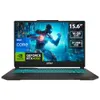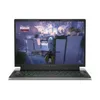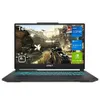I just played games on Nvidia RTX 5090, and the hype is real — here’s why
This is truly mindblowing
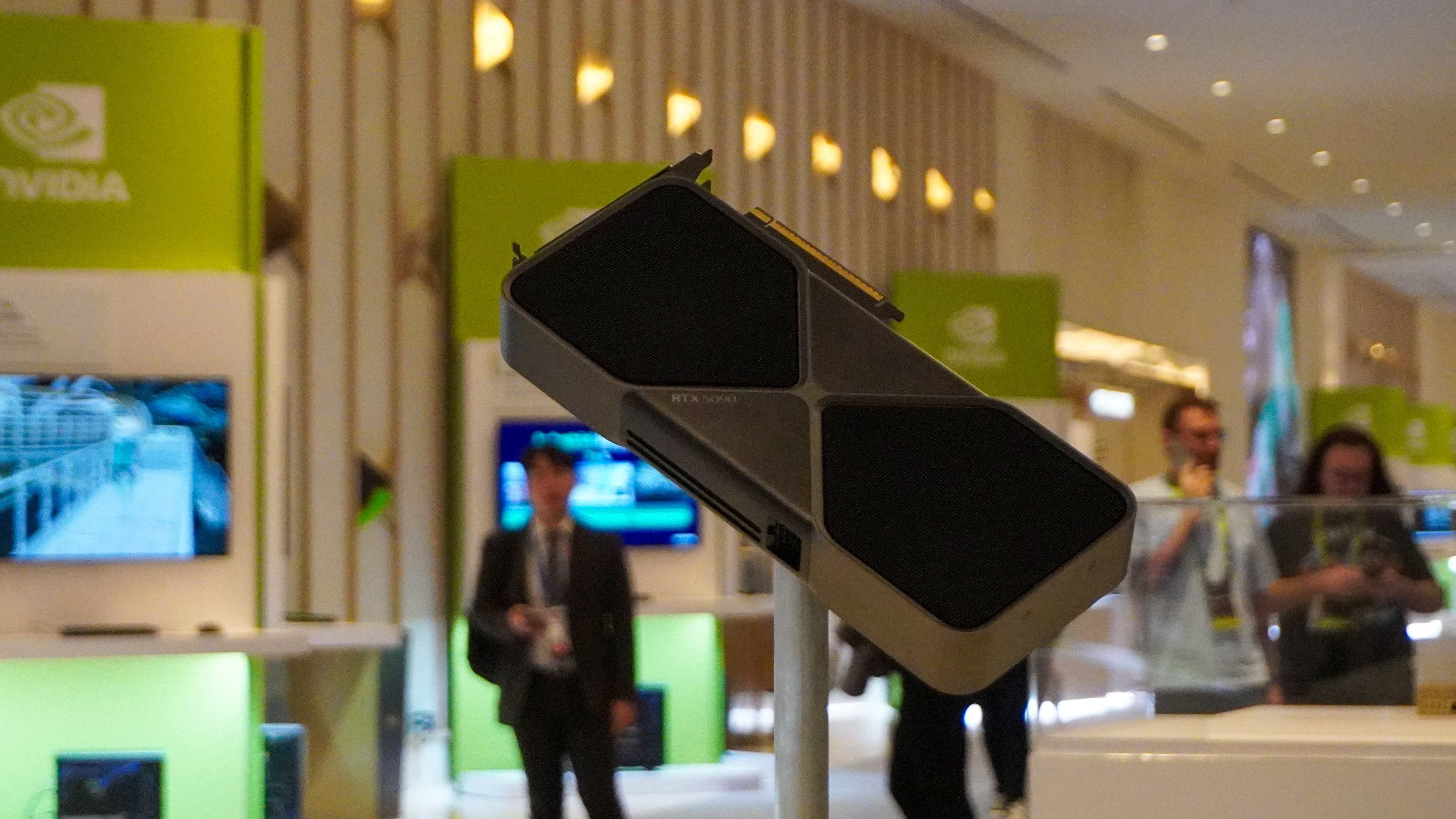

Follow our CES 2025 live blog for all the biggest tech and gadget news straight from Las Vegas. And be sure to follow Tom's Guide on TikTok for the coolest videos live from the show.
The Nvidia GeForce RTX 5090 is a massive GPU that just got announced at CES 2025, and it rightfully deserves its size and stature by bringing monstrous gameplay performance and AI power to usher in the next generation of gaming graphics — something that I got to witness for myself.
In my hands-on, I’ll go into detail about what you get with this $1,999 graphics card that launches on January 30, alongside what software capabilities (many of which are AI-driven) the new hardware unlocks, and exactly what this means in gameplay.
Put simply, I’m about to show you why Nvidia’s RTX 50-series GPUs were an easy choice to win our best of CES 2025 award!
What do we know about RTX 5090?
Let’s break down the RTX 5090 — easily the most powerful gaming graphics card you can buy today with effectively double the performance of the outgoing 4090. Inside, everything has been upgraded thanks to Nvidia’s new Blackwell Architecture:
- 680 5th Gen Tensor Cores that maximize AI performance to help make DLSS 4 possible.
- Brand new Streaming Multiprocessors that are optimized for RTX Neural Shaders that can create super realistic textures
- 170 4th Gen Ray Tracing Cores to support RTX Mega Geometry
Combine all this with 32GB of GDDR7 video memory running at a ridiculous total bandwidth of 1,792 GB/sec, alongside a whopping 3,352 TOPS of AI power and 21,760 CUDA Cores (a core designed specifically to run parallel computing tasks effectively), RTX 5090 aims to hit that new 4K 240 frames per second standard found in gaming monitors like the new Asus ROG Swift OLED PG27UCDM.
And after playing two incredibly demanding games, I can confirm that Nvidia isn’t mucking about here. The claims are real and my mind has been truly blown.
Black Myth: Wukong
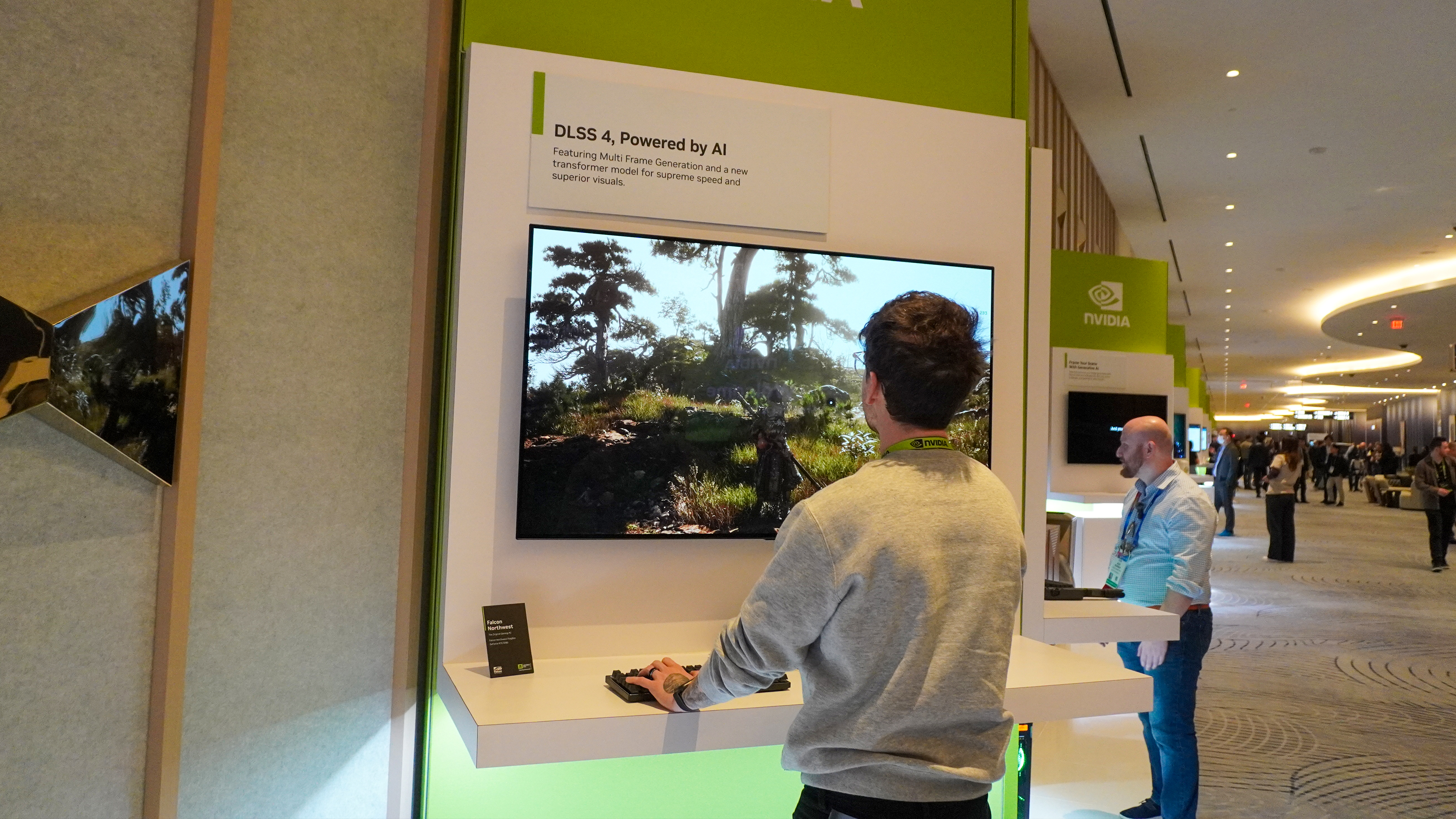
Black Myth: Wukong is a truly gorgeous-looking game that can be a pain for any GPU to render because of the massive demands for on-board graphics card memory. This is no trouble for RTX 5090, and as you can see, I was comfortably getting well over 200 FPS with DLSS on and everything turned up to max settings in 4K.
Sign up to get the BEST of Tom's Guide direct to your inbox.
Get instant access to breaking news, the hottest reviews, great deals and helpful tips.
This was the only demo that had a frame counter present. From the visual fidelity to the non-existent latency that comes with using DLSS, this is such a step up for PC gaming.
And speaking of DLSS — to those who are out of the loop, Deep Learning Super Sampling essentially uses AI to interpret and make predictions on what is going to happen in the next frame of gameplay based on what is happening in the current frame.
That ensures vastly smoother gameplay and faster frame rates, but sometimes with the current version of DLSS 3.5, you are seeing that predictive loop of the next frame make a couple errors. The problem is called ghosting, where you may see the trace of a fast moving object stick around for a few frames more than it should.
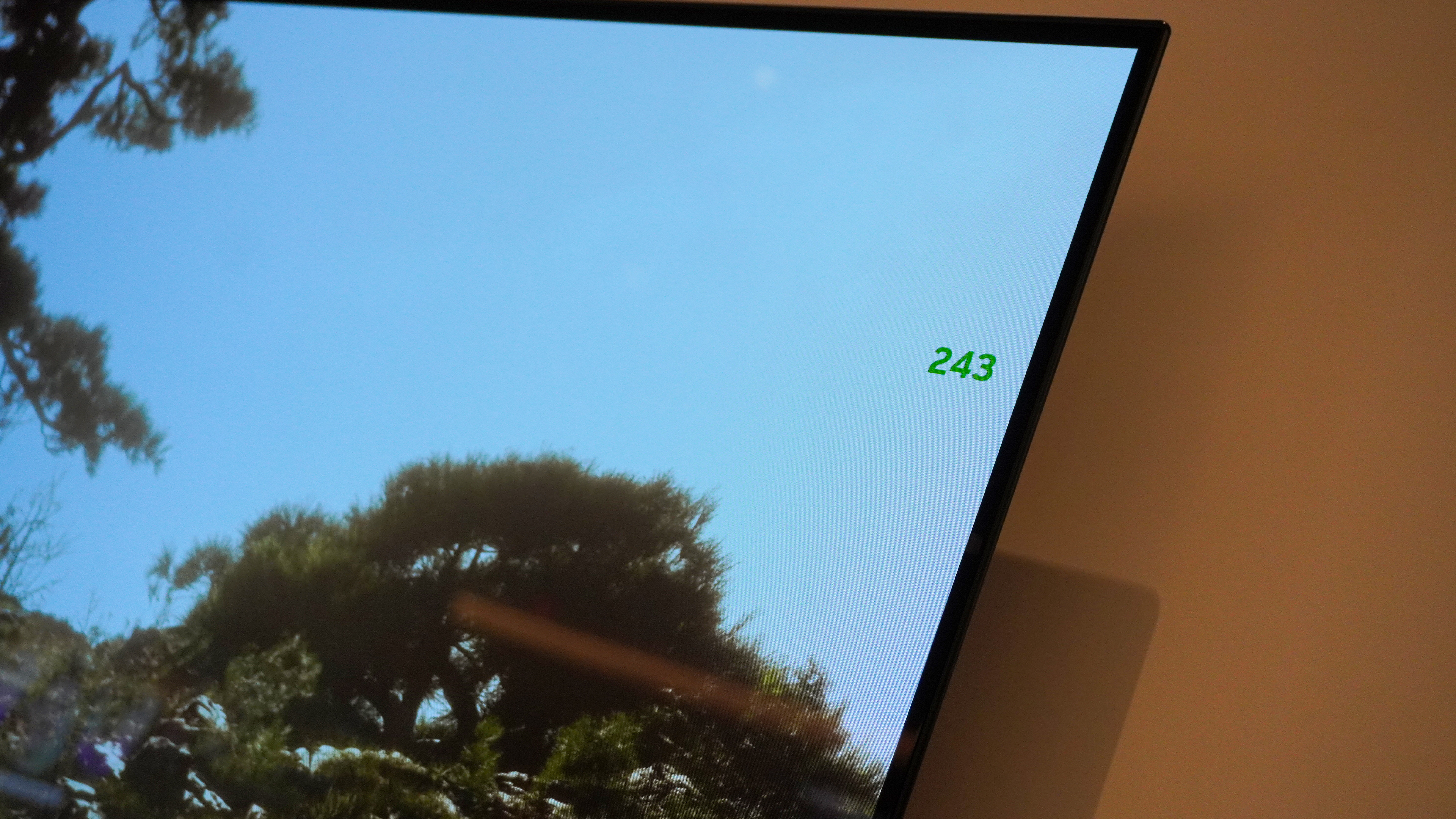
With DLSS 4, not only does it generate the next frame, it generates multiple frames ahead of time using a new AI model, which uses 30% less video memory. And on top of that, I noticed zero ghosting or artifacting.
Black State
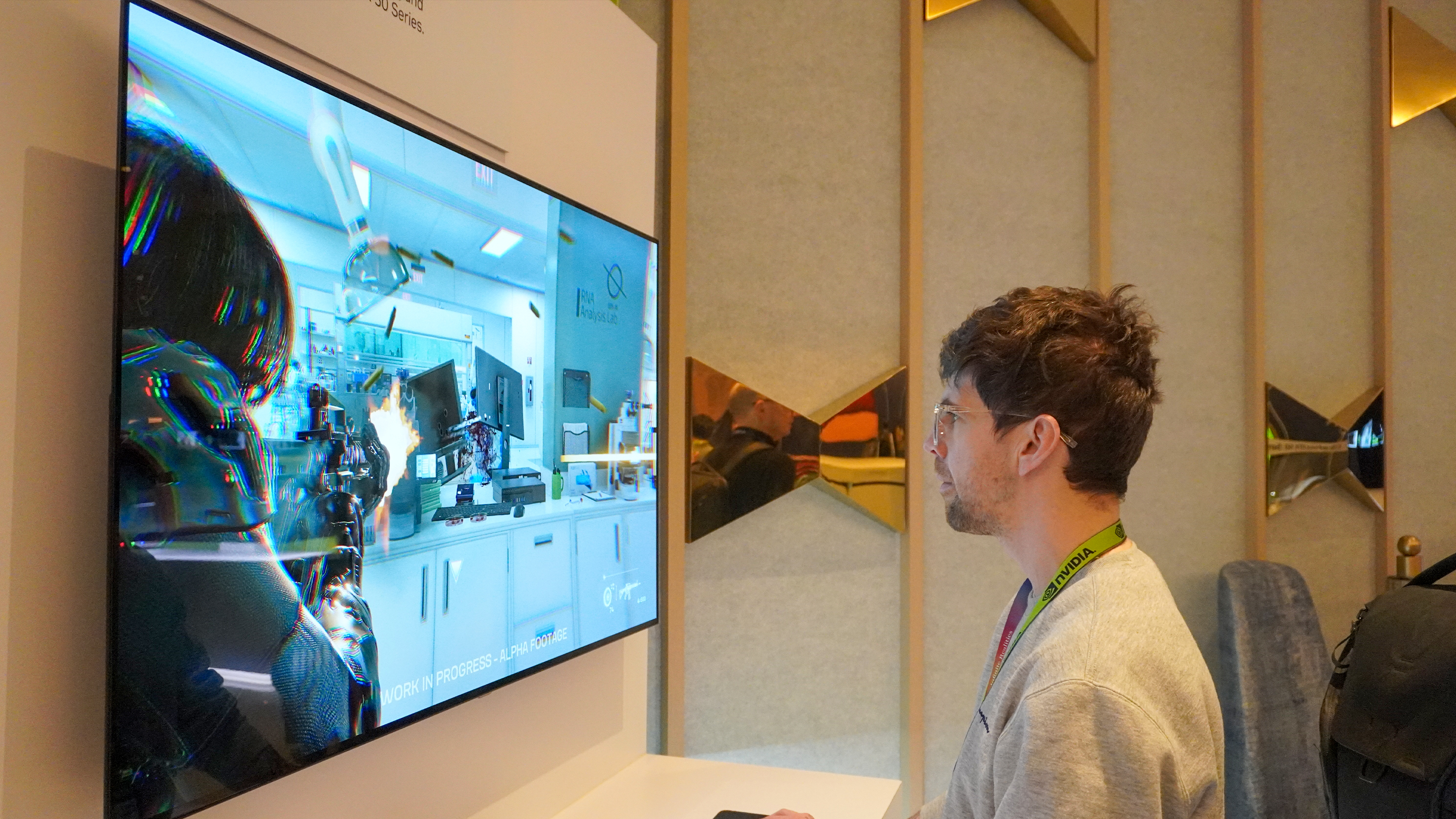
Meanwhile, this is the first time I’ve played Black State — a 3rd person shooter from developer Motion Blur that tells the story of an agent that is saving the world from a cataclysmic event.
Once again, this was a demo using RTX 5090, 4K max settings with DLSS 4 multi frame generation (15 out of every 16 pixels is generated entirely using this AI technique). And on top of that, the next generation Nvidia Reflex to drastically reduce latency. Pair that with the photorealistic style that the developers are going for with the visual flair, and there’s no two ways around it: this is the best-looking game I’ve ever seen.
With no frame counter on-screen, I can only go off the general vibe I’m getting off the smoothness. I’m quietly confident you’re getting over 120 FPS, and with all the ray tracing, path tracing and neural rendering of said light tracing at play here, this is a jaw dropping experience.
Plus, that latency feels pretty much non-existent, which contributes to those super addictive 3rd person shooter gameplay mechanics (including bullet time) with satisfyingly chunky weapons — including a plasma gun that can literally explode your foes.
Using slow motion during one of these plasma bullet impacts is a wild ride: a pinata of blood and guts that swells and fades in reaction to your shot before blowing up. But every single pixel of this is seemingly ray traced for quite the immersive light show.
Outlook
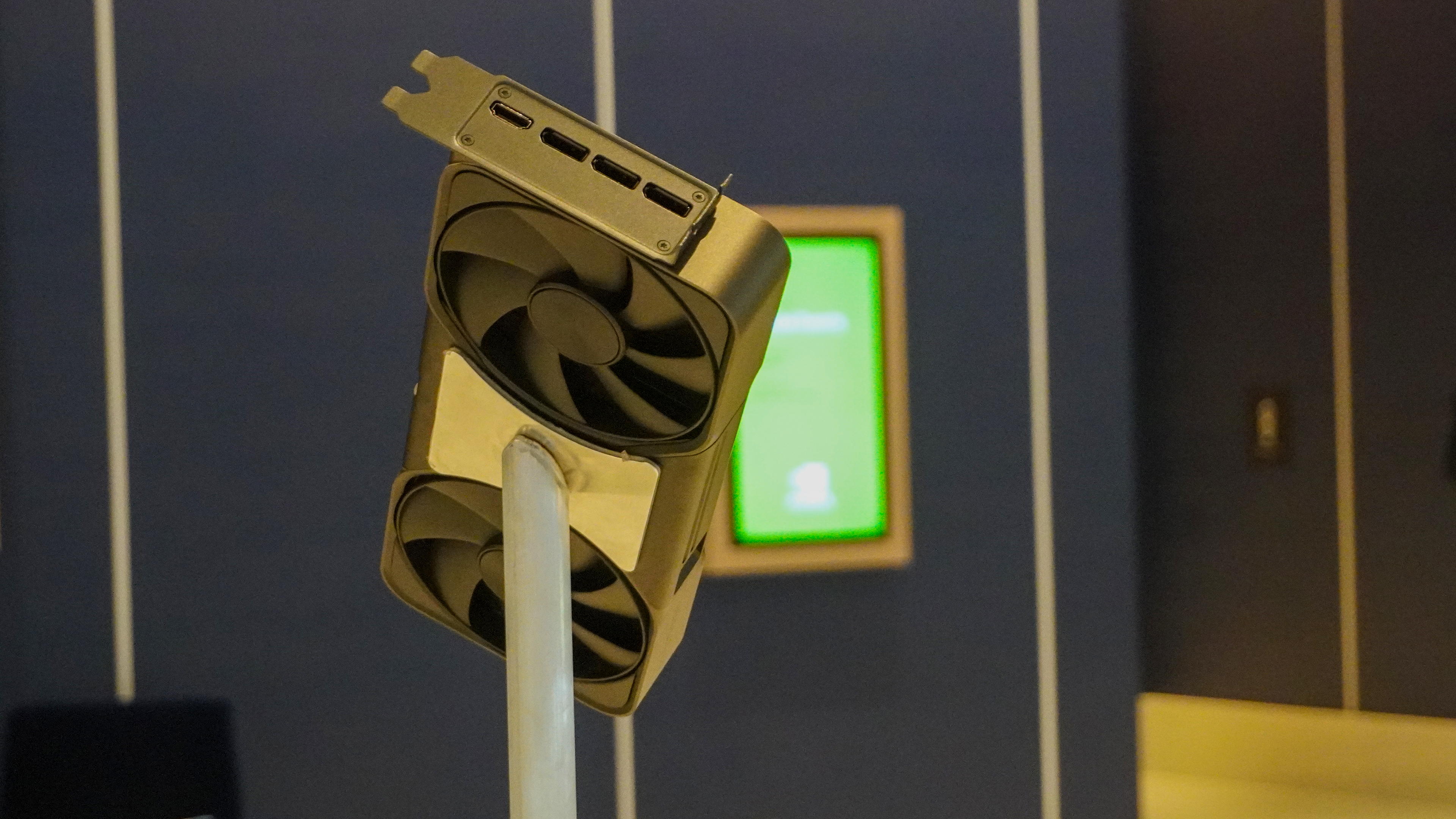
Nvidia RTX 5090 is truly a game changer (pardon the pun) — a beasty card with even beastier performance gains that are going to set the stage for the next generation of graphical fidelity.
CES 2025 has been a huge show for gaming, including huge improvements in integrated graphics courtesy of the AMD Ryzen AI Max chipset that is powering RTX 4060-level framerates and fidelity in the ROG Flow Z13.
But Nvidia didn’t just want to prove that dedicated graphics are still huge, team green wanted to completely annihilate the competition. The $1,999 RTX 5090 absolutely does this, and I cannot wait to play more!
More from Tom's Guide
- AMD’s Ryzen AI Max: The silent killer of dedicated laptop GPUs? Let me explain
- I found my favorite CES 2025 gadget — Lenovo’s first rollable laptop just stole the show with a screen that grows 50% on command
- Intel Core Ultra 200H and HX Series chips are here — everything you need to know

Jason brings a decade of tech and gaming journalism experience to his role as a Managing Editor of Computing at Tom's Guide. He has previously written for Laptop Mag, Tom's Hardware, Kotaku, Stuff and BBC Science Focus. In his spare time, you'll find Jason looking for good dogs to pet or thinking about eating pizza if he isn't already.
-
mikaelfred Rtx 40 series is also getting dlss 4 just not the multi frame generation.Reply
Will probably see some sort of boost in framegen as well as it will be enhanced



